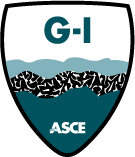Sunday, March 26
Full Day Courses
8:00 a.m. – 5:00 p.m
In-Situ Testing Using the Seismic Piezocone
Instructor(s): Paul Mayne
This one-day seminar on cone penetration testing (CPT) and her sisters (CPTU, SCPTU) covers the basic evaluations of soil behavior type, geostratigraphy, and the interpretion of geoparameters, including: unit weight, relative density, effective friction angle of sands and clays, yield stress ratio, modulus, and the use of dissipation tests for assessing the coefficient of consolidation and permeability. The value of shear wave velocity is featured as a fundamental stiffness of the ground. Additional modules cover the evaluation of both flow and cyclic liquefaction from CPT, as well as direct methods for shallow & deep foundations and new developments in penetrometer technology.
Simple Methods to Rapidly Characterize and Model Unsaturated Soil Behavior
Instructor(s): Xiong Zhang, Laureano R. Hoyos, Marcelo Sanchez
Although significant progress has been made in the past six decades, unsaturated soil mechanics is not extensively used in routine engineering projects for several reasons: (1) the equipment needed to characterize unsaturated soils is expensive (60-150k), (2) the suction-controlled tests are time-consuming (1-3 months/soil, 3-5 years/soil), and (3) the theories for unsaturated soils are complicated to understand and model. This short course will introduce simple methods to characterize and model unsaturated soils as follows: (1) A Modified State Surface Approach (MSSA) is used to explain unsaturated soil behavior, which can be easily understood by engineers without previous background in constitutive modeling. (2) Conventional testing equipment (single-cell triaxial, oedometer, and unconfined compression test apparatus) for saturated soils is used to rapidly characterize unsaturated soils (4-8 hours/test, 1-2 weeks/soil). (3) Step-by-step procedures are given to analyze these results for constitutive modeling purposes without sacrificing the theoretical accuracy. (4) Examples will also be given to demonstrate how to use the results for numerical simulation of unsaturated soil-related boundary-value problems. The well-known Barcelona Basic Model (BBM) will be used to demonstrate the proposed methods.
Morning Courses
8:00 a.m. – 12:00 p.m.
DMT and SDMT
Instructor(s): Diego Marchetti
The Flat Dilatometer (DMT) and Seismic Dilatometer (SDMT) course will focus on the following topics: working principle, test procedures, field results and data reduction to interpreted geotechnical parameters. It will include comparisons with other soil testing methods and an insight in the recently developed fully automated dilatometer (Medusa DMT).
Afternoon Courses
1:00 – 5:00 p.m.
Introduction to Numerical Modeling in Geotechnical Engineering
Instructor(s): Siavash Zamiran
This short course focuses on practical applications of numerical modeling in the simulation of geo-structures such as retaining walls, foundations, and tunnels. It will introduce the use of constitutive modeling, in-situ stresses, boundary conditions, meshing, and material properties in numerical modeling. Commercially available tools for geotechnical engineers will be introduced, with a focus on the FLAC program (Itasca International Inc.).
